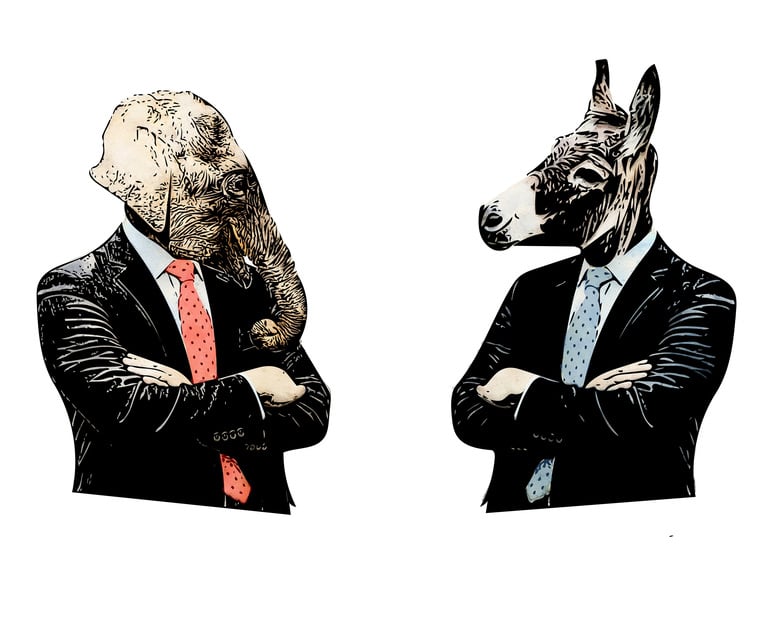Photo Frontier
The Nikon D90 makes a valiant effort at video recording and takes great pictures too.
December 31, 2008 at 07:00 PM
5 minute read
 |
| Taken with the D90 in Humboldt Park, Chicago. |
For several years now, amateur photographers wanting higher-quality images than point-and-shoots offer have upgraded to bulkier, more versatile digital single lens reflex (D-SLR) cameras. As digital technology continues advancing into the stratosphere and camera prices continue to fall, D-SLRs, with their interchangeable lenses and manual control capabilities, have become ubiquitous.
When Nikon released the D90 at the end of August, the top-tier camera manufacturer elevated the D-SLR arena to a brand new level. The D90 is the first D-SLR to record video–and high-definition video at that.
Still photography is the D90's primary function–and it offers the crisp, colorful images that have kept Nikon toward the top of the photography food chain for decades. Unfortunately, the auto-focus lags a bit when shooting with the live view option, compared to looking through the viewfinder. But the camera handles low-light situations well, eliminating the noise that long plagued Nikon D-SLR images. And the camera shoots 4.5 frames per second, which makes it easy to capture your kids' soccer games.
Photographs aside, the D90's video feature truly separates it from other top-of-the-line digital cameras. The feature is definitely cool–you get the sharpness, focus control and saturated colors that Nikon lenses offer. However, Nikon–which marketed the camera as almost a replacement for a camcorder–is still perfecting the technology, and potential buyers should recognize its limitations.
Because the camera's sensor heats up while recording video, the camera only allows you to record up to five minutes of video at a time. And HD video–at 1280×720 resolution–takes up a lot of hard drive space. I shot just one minute and 15 seconds of video, and it filled more than 100 megabytes of my memory card. The D90's photos are large files too, so you'll want a large memory card with at least a gigabyte–or two–of space.
That said, I felt like a real filmmaker with the D90.Even with the kit lens, I could zoom and manually focus (auto-focus doesn't work in video mode) on my subjects with a precision that rivals many moderately priced digital camcorders. With the ability to use any Nikon lens–from fisheyes to telephotos–filming possibilities are endless.
All in all, the D90 teeters on the edge of the future. It accomplishes what traditional D-SLRs are designed to do, and it makes a brave first expedition into uncharted video recording territory that will only continue to expand in years to come.
 |
| Taken with the D90 in Humboldt Park, Chicago. |
This content has been archived. It is available through our partners, LexisNexis® and Bloomberg Law.
To view this content, please continue to their sites.
Not a Lexis Subscriber?
Subscribe Now
Not a Bloomberg Law Subscriber?
Subscribe Now
NOT FOR REPRINT
© 2024 ALM Global, LLC, All Rights Reserved. Request academic re-use from www.copyright.com. All other uses, submit a request to [email protected]. For more information visit Asset & Logo Licensing.
You Might Like
View All
Beyond the Title: Developing a Personal Brand as General Counsel

Step 1 for Successful Negotiators: Believe in Yourself

Deluge of Trump-Leery Government Lawyers Join Job Market, Setting Up Free-for-All for Law Firm, In-House Openings
4 minute readTrending Stories
Who Got The Work
Michael G. Bongiorno, Andrew Scott Dulberg and Elizabeth E. Driscoll from Wilmer Cutler Pickering Hale and Dorr have stepped in to represent Symbotic Inc., an A.I.-enabled technology platform that focuses on increasing supply chain efficiency, and other defendants in a pending shareholder derivative lawsuit. The case, filed Oct. 2 in Massachusetts District Court by the Brown Law Firm on behalf of Stephen Austen, accuses certain officers and directors of misleading investors in regard to Symbotic's potential for margin growth by failing to disclose that the company was not equipped to timely deploy its systems or manage expenses through project delays. The case, assigned to U.S. District Judge Nathaniel M. Gorton, is 1:24-cv-12522, Austen v. Cohen et al.
Who Got The Work
Edmund Polubinski and Marie Killmond of Davis Polk & Wardwell have entered appearances for data platform software development company MongoDB and other defendants in a pending shareholder derivative lawsuit. The action, filed Oct. 7 in New York Southern District Court by the Brown Law Firm, accuses the company's directors and/or officers of falsely expressing confidence in the company’s restructuring of its sales incentive plan and downplaying the severity of decreases in its upfront commitments. The case is 1:24-cv-07594, Roy v. Ittycheria et al.
Who Got The Work
Amy O. Bruchs and Kurt F. Ellison of Michael Best & Friedrich have entered appearances for Epic Systems Corp. in a pending employment discrimination lawsuit. The suit was filed Sept. 7 in Wisconsin Western District Court by Levine Eisberner LLC and Siri & Glimstad on behalf of a project manager who claims that he was wrongfully terminated after applying for a religious exemption to the defendant's COVID-19 vaccine mandate. The case, assigned to U.S. Magistrate Judge Anita Marie Boor, is 3:24-cv-00630, Secker, Nathan v. Epic Systems Corporation.
Who Got The Work
David X. Sullivan, Thomas J. Finn and Gregory A. Hall from McCarter & English have entered appearances for Sunrun Installation Services in a pending civil rights lawsuit. The complaint was filed Sept. 4 in Connecticut District Court by attorney Robert M. Berke on behalf of former employee George Edward Steins, who was arrested and charged with employing an unregistered home improvement salesperson. The complaint alleges that had Sunrun informed the Connecticut Department of Consumer Protection that the plaintiff's employment had ended in 2017 and that he no longer held Sunrun's home improvement contractor license, he would not have been hit with charges, which were dismissed in May 2024. The case, assigned to U.S. District Judge Jeffrey A. Meyer, is 3:24-cv-01423, Steins v. Sunrun, Inc. et al.
Who Got The Work
Greenberg Traurig shareholder Joshua L. Raskin has entered an appearance for boohoo.com UK Ltd. in a pending patent infringement lawsuit. The suit, filed Sept. 3 in Texas Eastern District Court by Rozier Hardt McDonough on behalf of Alto Dynamics, asserts five patents related to an online shopping platform. The case, assigned to U.S. District Judge Rodney Gilstrap, is 2:24-cv-00719, Alto Dynamics, LLC v. boohoo.com UK Limited.
Featured Firms
Law Offices of Gary Martin Hays & Associates, P.C.
(470) 294-1674
Law Offices of Mark E. Salomone
(857) 444-6468
Smith & Hassler
(713) 739-1250







